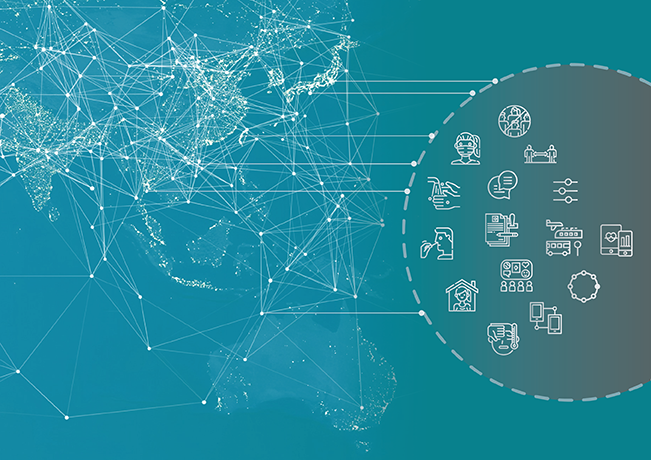As cities in the U.S. begin to reenter the physical workplace, many employers have questions about how to do so effectively and responsibly. Regardless of location, there are some
best practices and important points to consider, but there is also great value in learning from the experiences of others. While few places in the world can claim to be COVID-free — defined as having no new local infections for 28 days — countries in the Asia-Pacific Region (APAC) are generally further along their epidemic curves, allowing us to learn from them.
Generally, the response of APAC countries was more comprehensive than that of the U.S., owing to both the government’s response and cultural factors. All APAC countries have implemented rigorous testing regimes. Wearing masks at all times, even while sitting at desks, is common, and social distancing is prevalent with varying degrees of government enforcement. Mobile technology has played a prominent role in the response throughout the APAC region; its use ranges from app-based contact tracing to per-person quarantine status tracking. Many areas in APAC have been implementing or at least evaluating HVAC updates, ultralight germicidal irradiation (UVGI), and other technical changes to buildings.
We reached out to our colleagues in the region for their perspectives on the local COVID response.
Shanghai
Our colleagues in Shanghai were some of the first to share their experiences as they emerged from COVID-related lockdowns that had been in place since early February. In major cities across China,
mobile apps are used to track each person’s quarantine status and to enable access to public areas. “Basically entering anywhere, you would be subject to temperature checks. Even after returning to the office, work was remote for the most part as no one was willing to meet in person,” shared Hoichi Yeung of Savills Shanghai.
Occupants in many buildings
were not permitted to use HVAC systems, which were thought to be possible transmission vectors. Instead, people were instructed to open any operable windows even though it was still quite cold in the late winter and early spring. The measures taken did help occupants to feel protected, says Yeung: “It may seem a bit odd, but the office almost seems like a safe place as compared to outside. You know all the people . . . and you trust the hygiene measures taken by the building.”
Most restrictions have now been lifted in Shanghai. Cafes, restaurants, and gyms are open, but there are still soft limits on large gatherings.
Hong Kong
Next, we heard from our colleagues in Hong Kong, where social distancing measures began in late March. Many people there have just begun to have the option to be in the office five days a week. Thermal scans and temperature checks are performed on tenants and visitors in all buildings. The government is in the midst of distributing 7.5 million reusable masks to the public, and mask wearing is expected at all times. People entering buildings may be asked about recent travel.
Some office buildings use a vestibule to spray people with disinfectant on entry,
like this one being tested for employees at the Hong Kong airport. The disinfectant used is purportedly derived from plant extracts that are hostile to virus particles.
Much of city life has resumed in Hong Kong. Bars, restaurants, and cinemas are opening to reduced crowds while gyms, beauty, massage, and mahjong parlors are implementing new hygiene protocols. Nightclubs and karaoke bars remain closed, and live music performances and dancing will remain banned.
Seoul
South Korea’s early and much acclaimed implementation of widespread testing in late February prevented pervasive community spread in Seoul. As such, less aggressive measures have been needed to mitigate COVID. Many offices did not close, and much of life has continued as before. They were even able to
hold parliamentary elections — with 30 million citizens participating — without causing any new infections. That being said, occasional outbreaks in recent weeks have required museums and parks to be closed, and large gatherings are not allowed.
Workplaces voluntarily implemented social distancing recommendations suggested by the government, with the ability to scale up or down as needed. Automatic temperature scanners have been installed in some buildings, and can alert a member of the property management team of anyone with a high temperature. The response might range from staggering hours (helping help employees avoid large commuting crowds) to full work-from-home protocol.
While many people are now reentering returning to the office, some companies (particularly in the technology sector) are extending their current remote work practices, perhaps through year-end 2020.
Singapore
Singapore has a reputation for fairly strict laws around cleanliness and order, and it appeared that this would play a role in limiting the spread of coronavirus there. These included a minimum one-meter spacing between people in all circumstances. After distributing masks to every resident, the government required mask-wearing at all times, enforced with fines. The government is even
using a robotic dog to patrol public areas and remind residents to maintain a safe distance.
People experiencing COVID-related mental health, family, or financial issues can call a
free National CARE hotline set up by the government. Hundreds of volunteers, many of them psychologists or other health professionals from the public sector, are providing counseling and other guidance to affected residents.
Early indications were that Singapore had beaten the outbreak, but restrictions had to be extended when a second wave emerged among migrant workers living in close quarters. Social distancing measures are now expected to be in place for months.
Bangkok
We connected with family and friends in Thailand. They shared a particularly interesting insight; because shopping malls are a huge part of people's lifestyle in Bangkok, some of the most advanced responses to COVID have come from mall operators. These measures include QR code upon entry for contract tracing, a disinfecting tunnel, and thermal cameras that screen on entry into many buildings.
We learned that some offices in Thailand reopened for business in mid-May, though with strict social distancing guidelines, staggered schedules, regular temperature checks, and a 50% reduced work point capacity.
Many Bangkok residents already wore masks pre-COVID because of PM 2.5 pollution, but our contacts shared that most people have now upgraded their PPE to include transparent visors. People are also
washing money to disinfect it.
Tokyo
Japan’s response has been
more targeted than that of other countries in the region, and cultural factors were a key part of their success in keeping their overall caseload low even in dense cities. The wearing of face masks was commonplace in Japan even before COVID-19, and there is now a very high level of mask usage for any activity outside of the home. While telework has been encouraged in Japan, compliance is not mandatory. Even so, Tokyo transportation volumes have fallen 70-80% with COVID-19.
Our friend John Suzuki at Colliers International in Tokyo observed, “there appears to be a correlation between the size of the floorplate and likelihood of infection.” This could be caused by recirculation; larger floor plates have more spaces that are connected and are more likely to share the same air.
The state of emergency has been lifted in Japan, but many of Tokyo’s offices have yet to re-open from voluntary closure. Where they have done so, staggered schedules and decentralization are used to mitigate transmission risk and to ensure that at least part of each department can still operate in the event a case emerges.
Considerations going forward
Each community has had a unique experience in this pandemic, and it is probable that many will experience cyclical patterns — easing of restrictions followed by increased spread, leading to re-lockdown — for some time. We will continue to seek out best practices wherever they emerge, and to share them in support of successful reentry to the office.
Coworking facilities have always been ahead of the curve in terms of adopting smart practices and digitizing the workplace experience. Observing what they’re doing continues to be a source of insights. For example, coworking facilities may be more fully prepared to handle the impact of COVID-19 than the typical traditional office because digital check-in and booking make it easier to conduct contract tracing.
In addition to the direct impacts of mitigation and monitoring measures, it is important to remember that availability of surrounding services and amenities will continue to have an impact on employees. For instance, if offices are allowed to re-open but restaurants are not, this can affect the food choices available to employees during the workday. Availability of child care and accessibility of public transportation continue to be challenges around the world.





